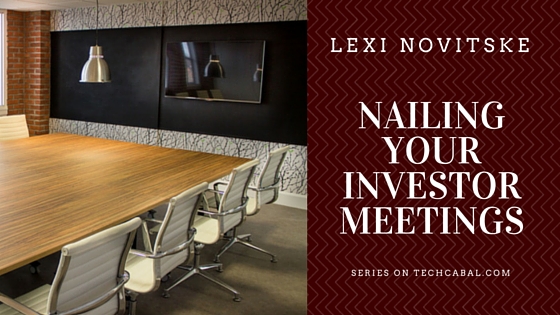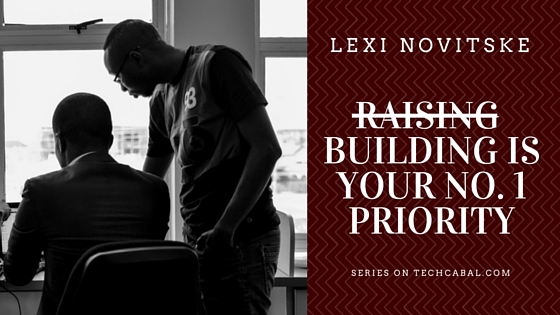A Harvard Business School study recently showed that the average investor looks at a pitch deck for 3 minutes and 44 seconds. The obvious takeaway – the pitch doesn’t matter, a good business speaks for itself, right?
Wrong.
I’ve already written about what VCs want. Founders’ relevant experiences and the untapped potential of a their market are promising signs. But promising businesses aren’t funded just because they are promising.
Investing is a relational act. It’s a partnership between parties built initially on personal impression. Investors are not robots, but we are human beings inclined to biases, perceptions, feelings and opinions – made quickly and judiciously during the pitch.
Remember that the average human attention span is eight seconds long. That’s why the 3 minutes and 44 seconds of your pitch really matters. So follow the below for practical steps on how to make it a good one.
1. Get to the Point
I’ve heard “meandering introductions are the death of a pitch.” I’ll take this further: “Meandering anything is the death of a pitch.” As your prepare, focus on these three Cs –
Be Crisp
Your pitch should be so well rehearsed, your business so well understood, that after the first five minutes, everyone in the room should understand what you do and the problem you’re positioned to solve or the opportunity you’re looking to exploit. As you prepare, ruthlessly remove what is worthless: Best of Breed! World Class! Industry Disrupting! If it genuinely is, I promise, I’ll figure it out.
Be Compelling
Attract investors’ interest by being prepared. The most compelling pitches succinctly capture the relevancy of the problem, the promise of the solution, the proficiency of the team and the execution plan. Tight doesn’t mean boring. What captivating stories can you share that emphasize the problem or opportunity potential? Being compelling means articulating the calculable or cerebral and emotional elements of the story. Connecting these dots on this makes my job easier. I can actually consider funding, instead of wasting brainpower on trying to piece together what you do and why.
Be Credible
Let me sum this up: don’t lie. Enthusiastic founders may cross this line in the form of exaggerations on past successes, stretch assumptions in the financials or flat out deceit. There will be holes and unanswered questions in our conversations. Be passionate in defense of your past successes and confident in your projections, but humbly admit where you need further due diligence. When we’re through, my remaining questions should have to do with how we’ll execute together, not if I trust you and your team.
2. Don’t Close Me
Pitching is not a hard sale.
The best investor and founder relationships are partnerships. The journey is mutually beneficial, exploratory, and ideally, ends with us satisfied, expectant and convinced of the value we both bring.
Of course, you better be passionate and convinced of your business. You’re giving your life to this. But if you view me as a “customer”, you’ll tend towards slick talk, defensive posturing or half truths. Anything that feels like a sales pitch will make me skeptical. I stop hearing and start second guessing.
Effectively establish the compelling market opportunity and how you’re positioned to capitalize on it. Be transparent and honest about your competitive challenges and clearly articulate how you’ll execute around these. Do that and you don’t need to sell anything.
3. Focus On My Fears
Entrepreneurs are optimistic by nature. Investors are naturally risk-averse. This is not problematic, it’s what makes the ecosystem thrive. But to close the perception gap, founders must focus on anticipating and alleviating investors’ fears. I’ve outlined common fears and offer a recommendation on how to handle these in your pitch –
Demonstrable Progress
Regardless of stage, include business metrics that are factual, explicit and allow quantitative consideration of your progress or business model. Particular attention should be paid to growth-to-date (sign ups, active users, paying customers) and engagement or retention performance. If you’re very early stage without demonstrable progress, what is the “unfair” advantage that you have to drive engagement?
Meaningful Models
Traction and forecasts matter, but only in context. Breakdown key unit economics which provide direct revenue or cost associations on a per unit or customer basis. Do your research on relevant calculations for your business model. Some examples may include: customer-acquisition-costs, average revenue per active user, marginal operating costs or duration/average customer life. Tie these to your “headline” forecast assumptions of revenue, CAPEX or cash flow. Similarly, use these unit economics to chart a course of milestones that my investment funding will enable you to achieve. Even if I disagree on inputs, the assumptions give us a starting place to ensure the economic engine of your company actually works.
Response to Risks
It’s tempting to skirt the issue of risks for fear of scaring off investment. Every investor is keenly aware of risks. In fact, our concern is heightened by the ignorance or avoidance of these in conversation. The best pitches proactively bring these up and give thought to contingency planning should they arise. For my African investments, obvious risks to consider include –
Scale
Consider critical dependencies in your assumptions on scale – especially for local companies. Is your product or service regionally or globally relevant? Have you reviewed competition not just locally, but in your future, target markets? What is your hiring roadmap? Does your network contain the people and skills to deliver the scale and maturation you’re forecasting? All of these questions speak to the mechanics of efficient, affordable expansion. Most startups have visions of world domination without a clue of how extendable their platform and infrastructure is to address new markets.
Competitive Blindside
It’s one thing to understand existing competition, but I’m worried about the competition not-yet-seen. The world recognizes Africa’s untapped potential. How will you respond when a deep-pocketed, globally recognized brand steps into your market? Establishing why ‘local matters’ and how that message flows through your business is a critical step for early-stage companies.
Macro Shifts
Your greatest challenges may have nothing to do with the product you build. The dynamism of Africa brings opportunities, but also potentially crippling challenges for the unprepared founder. Consider: currency volatility, rapidly changing population profiles and access to investment capital for future funding rounds. Look at what has historically challenged enterprises in your geography – how is your growth trajectory impacted and what are the scenarios for sustain progress in light of these?
4. Decks That Stand Out
Before you type a word, think about the point of a pitch deck. Your deck is the rails on which your story rides. A deck does not tell a story, it provides a coherent and intelligible way to convey the essentials of your story.
I love fellow investor Guy Kawasaki’s advice. He advocates the 10/20/30 rule of slide decks.
No more than ten slides. No more than 20 minutes. No less than 30 point font.
Normal people cannot comprehend more than ten slides worth of information in a meeting. And if you find yourself needing more than ten, you probably don’t yet have a business worth sharing. Aiming for 20 minutes promotes a crisp presentation and leaves ample time for discussion – which is where the magic happens (there will be many situations where you may have to reduce it to five, which means keep the big picture and leaving the details for later). Finally, use a clear font and simple, descriptive pictures. Big font forces you to share the essentials. Small font means you’re reading and most are falling asleep.
If you cannot distill your business to a few thoughtful, thorough and creative slides, than what makes me think you’ll approach your business any differently?
There are lots of businesses that elicit excitement. There are some that elicit my confidence. Prepare your pitch with the above ideas in mind and you can join the select few companies that do both.
Need ideas for your ten slides? Alright! Simply fill out a quick founder survey to download Singularity’s pitch deck checklist here.






















